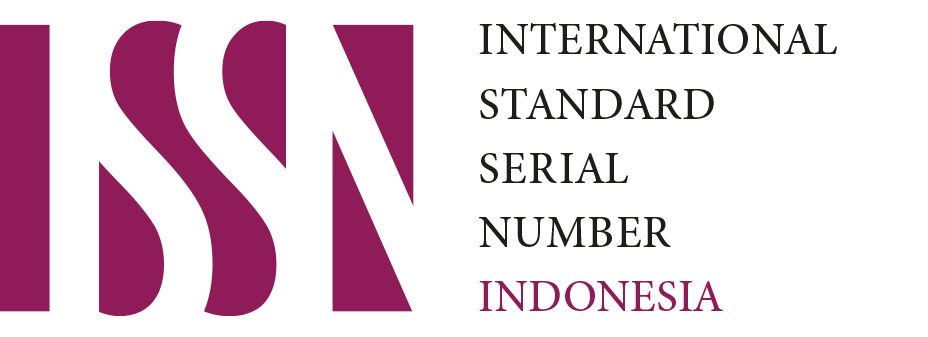Citation Analysis as a Tool of Library Collections Evaluation
Downloads
Downloads
Adams, B., and Noel, B. (2008). Circulation statistics in the evaluation of collection development. Collection Building, 27(2).
Agee, J. (2005). Collection evaluation: A foundation for collection development. Collection Building, 24(3).
Borin, J., and Yi, H. (2008). Indicators for collection evaluation: a new dimensional framework. Collection Building, 27(4).
Crawford, J. (2000). Evaluation of libraries and information services. London: Aslib, the Association for Information Management and Information Management International.
Crawley-Low, J. V. (2002). Collection analysis techniques used to evaluate a graduate-level toxicology collection. Journal of Medical Library Association, 90(3). Retrieved from http://www.ncbi.nlm.nih.gov/pmc/articles/PMC116404/
Departemen Pendidikan Nasional RI. (2004). Perpustakaan perguruan tinggi: Buku pedoman. Jakarta: Departemen Pendidikan Nasional RI Direktorat Jenderal Pendidikan Tinggi.
Disher, W. (2007). Crash course in collection development. London: Libraries Unlimited. Elita,
Funny, M. (2008). Pendekatan bibliometrik dalam komunikasi ilmiah. Tersedia pada http://funnymustikasari.wordpress.com/2008/10/09/bibliometrik/.
Euske, K. J. (1984). Control management. Canada: Addison-Wesley Publishing Company.
Fleet, C. Van. (2001). Evaluating reference and information services. In Library evaluation: A casebook and can – do guide. Englewood: Libraries Unlimited, Inc.
Fleet, C., and Wallace, D. P. (2001). The culture of evaluation. In Library evaluation: A casebook and can – do guide. Englewood: Libraries Unlimited, Inc.
Gorman, G.E., and Howes, B.R. (1991). Collection development for libraries. London: Bowker –Saur.
Hartinah, S. (2002). Analisis sitiran (Citation analysis). Dalam Makalah untuk Kursus Informetrika, diselenggarakan oleh Masyarakat Informetrika Indonesia, 20 s.d. 23 Mei 2002.
Hasugian, J. (2005). Analisis sitiran terhadap disertasi Program Doktor (S-3) Ilmu Kedokteran Sekolah Pascasarjana Universitas Sumatera Utara. Jurnal Pustaha: Program Studi Perpustakaan dan Informasi, 1(2), 1-11.
Johnson, P. (2009). Fundamentals of collection development and management. Chicago: American Library Association.
Lasa, H. S. (1998). Kamus istilah perpustakaan. Yogyakarta: Gadjah Mada University Press.
Nisonger, T. E. (2003). Evaluation of library collection, access and electronic resources: a literature guide and annotated bibliography. Westport, CT: Libraries Unlimited.
Purnomowati, S. (2005). Cara penulisan sitasi dan referensi: Perbandingan dari 5 buku panduan. Tersedia pada http://enewsblog.com/purnomowati/post/2005-05-09-23:45:50.
Siregar, B. (1998). Pembinaan koleksi Perpustakaan dan Pengetahuan Literatur. Medan: Pembinaan Perpustakaan Sumatera Utara.
Soeatminah. (1992). Perpustakaan, kepustakawanan, dan pustakawan. Yogyakarta: Kanisius.
Sulistyo-Basuki. (2002). Bibliometrika, sainsmetrika dan informetrika. Dalam Makalah untuk Kursus Informaterika, diselenggarakan oleh Masyarakat Informetrika Indonesia, 20 s.d. 23 Mei 2002.
Sutardji. (2003). Pola sitiran dan pola kepengarangan pada jurnal penelitian tanaman pangan. Jurnal Perpustakaan Pertanian, 12(1), 1-9.
Watson, K. D. (2001). Evaluating reference and information services. In Library evaluation: A casebook and can – do guide. Englewood: Libraries Unlimited, Inc.
Yeoh, K. H., and Kaur, K. (2008). Subject support in collection development: using bibliometric tool. Collection Building, 27(4).
Record and Library Journal by Unair is licensed under a Creative Commons Attribution-ShareAlike 4.0 International License.
1. The journal allows the author to hold the copyright of the article without restrictions.
2. The journal allows the author(s) to retain publishing rights without restrictions
3. The legal formal aspect of journal publication accessibility refers to Creative Commons Attribution Share-Alike (CC BY-SA).
4. The Creative Commons Attribution Share-Alike (CC BY-SA) license allows re-distribution and re-use of a licensed work on the conditions that the creator is appropriately credited and that any derivative work is made available under "the same, similar or a compatible license”. Other than the conditions mentioned above, the editorial board is not responsible for copyright violation.



 57201398420
57201398420

























